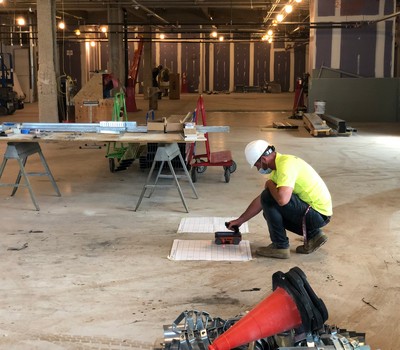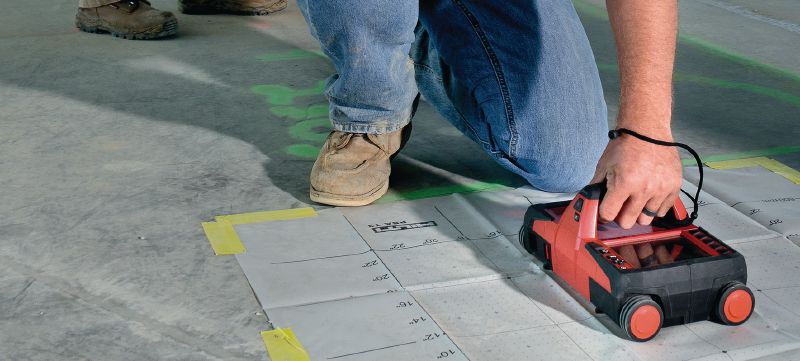Nationwide RainierGPR Service Areas for Advanced Concrete Scanning
Nationwide RainierGPR Service Areas for Advanced Concrete Scanning
Blog Article
Concrete Scanning: A Crucial Step In The Direction Of Guaranteeing Structural Stability and Security
In the world of construction and framework maintenance, the relevance of concrete scanning can not be overstated. This precise process holds the crucial to revealing prospective risks concealed below the surface area of apparently strong structures. By employing advanced technology and approaches, concrete scanning acts as an essential tool in making sure that the stability and security of bridges and buildings are supported to the greatest requirements. Nonetheless, past its surface-level ramifications, the function of concrete scanning extends much much deeper than fulfills the eye.
Value of Concrete Scanning
Concrete scanning plays a crucial duty in making sure the architectural integrity and security of structures and infrastructure jobs. By using advanced innovations such as ground-penetrating radar (GPR) and electro-magnetic induction, professionals can non-destructively check concrete structures to spot possible issues, spaces, embedded items, and support format. This procedure allows early discovery of abnormalities that can compromise the stability of a structure, stopping costly damages and ensuring the safety and security of passengers.
Concrete scanning is especially essential during the planning and building phases of a job. Before boring, cutting, or coring into concrete, scanning helps identify the accurate locations of rebar, post-tension cables, and various other ingrained components, reducing the risk of accidental hits that can bring about architectural weak points. In addition, concrete scanning help in quality assurance by validating the density of concrete covers and spotting any discrepancies that may affect the overall sturdiness of the structure. Ultimately, investing in concrete scanning services is not just an aggressive measure to reduce threats but also an essential action in the direction of preserving the lasting safety and security and security of buildings and facilities.
Technology for Concrete Examination

Benefits of Very Early Detection
Prompt discovery of architectural concerns can substantially mitigate dangers and make sure the long life of building and construction jobs. By determining possible problems early on in the construction process, stakeholders can take proactive steps to deal with issues prior to they rise right into larger and a lot more expensive troubles. One of the crucial advantages of very early discovery is the prevention of architectural failures, which can posture severe safety and security threats and lead to job hold-ups and financial losses.
Additionally, early discovery permits prompt fixings and maintenance, which can aid extend the life-span of the framework. By resolving concerns immediately, building and construction groups can prevent costly fixings and even the need for early replacement of architectural elements. This aggressive method not only saves time and cash however additionally boosts the general security and go to these guys toughness of the construction project.
Additionally, early discovery can boost job preparation and decision-making by providing stakeholders with valuable insights into the condition of the structure. Armed with this info, job supervisors can make educated choices regarding building and construction timelines, approaches, and products, causing more efficient and effective task outcomes.
Making Sure Architectural Stability
Making certain the structural security of a construction project is vital to its safety and longevity. Architectural security refers to the ability of a building or facilities to maintain its type and function under numerous loads and environmental conditions. To accomplish this, detailed analysis and monitoring of the structure are vital. Concrete scanning plays an important role in guaranteeing architectural stability by spotting potential concerns such as gaps, delamination, or reinforcement corrosion that can compromise the stability of the framework with time.
By making use of innovative scanning innovations like ground-penetrating radar (GPR) and electro-magnetic induction, building and construction professionals can non-invasively check concrete frameworks to determine areas of issue underneath the surface area. This aggressive approach enables the very early detection of weak points or issues, allowing timely repair work or support to stop architectural failures.
Normal concrete scanning during different construction stages and throughout the life cycle of a framework can aid preserve its stability, reduce risks, and make sure the security of occupants. By focusing on structural security with concrete scanning, building tasks can enhance their strength and resilience, inevitably adding to greater security and durability.
Protecting Against Critical Failings
Implementing routine examinations, such as concrete scanning, can disclose surprise flaws like gaps, fractures, or deterioration that might compromise the honesty of a framework. By making use of sophisticated scanning modern technologies like Ground Permeating Radar (GPR) or Concrete X-ray, designers can non-destructively analyze the condition of concrete and recognize weak points that need support or repair.

Final Thought
To conclude, concrete scanning plays an important function in guaranteeing structural stability and safety by utilizing sophisticated modern technology for early discovery of potential issues. This proactive approach aids stop crucial failings and makes sure the security of structures. It is important to focus on concrete inspection as a standard method to protect the long life and safety of structures and framework.
Concrete scanning plays a critical duty in ensuring the structural integrity and safety of structures and infrastructure jobs. Furthermore, concrete scanning help in quality control by verifying the density of concrete covers and detecting any type of discrepancies that may affect the overall durability of the framework. Concrete scanning plays a vital function in making sure structural stability by identifying potential problems such as voids, delamination, or reinforcement corrosion that could jeopardize the honesty of the framework over time.

In final thought, concrete scanning plays a crucial role in guaranteeing architectural integrity and safety and security by making use of advanced modern technology for very early detection of prospective issues.
Report this page